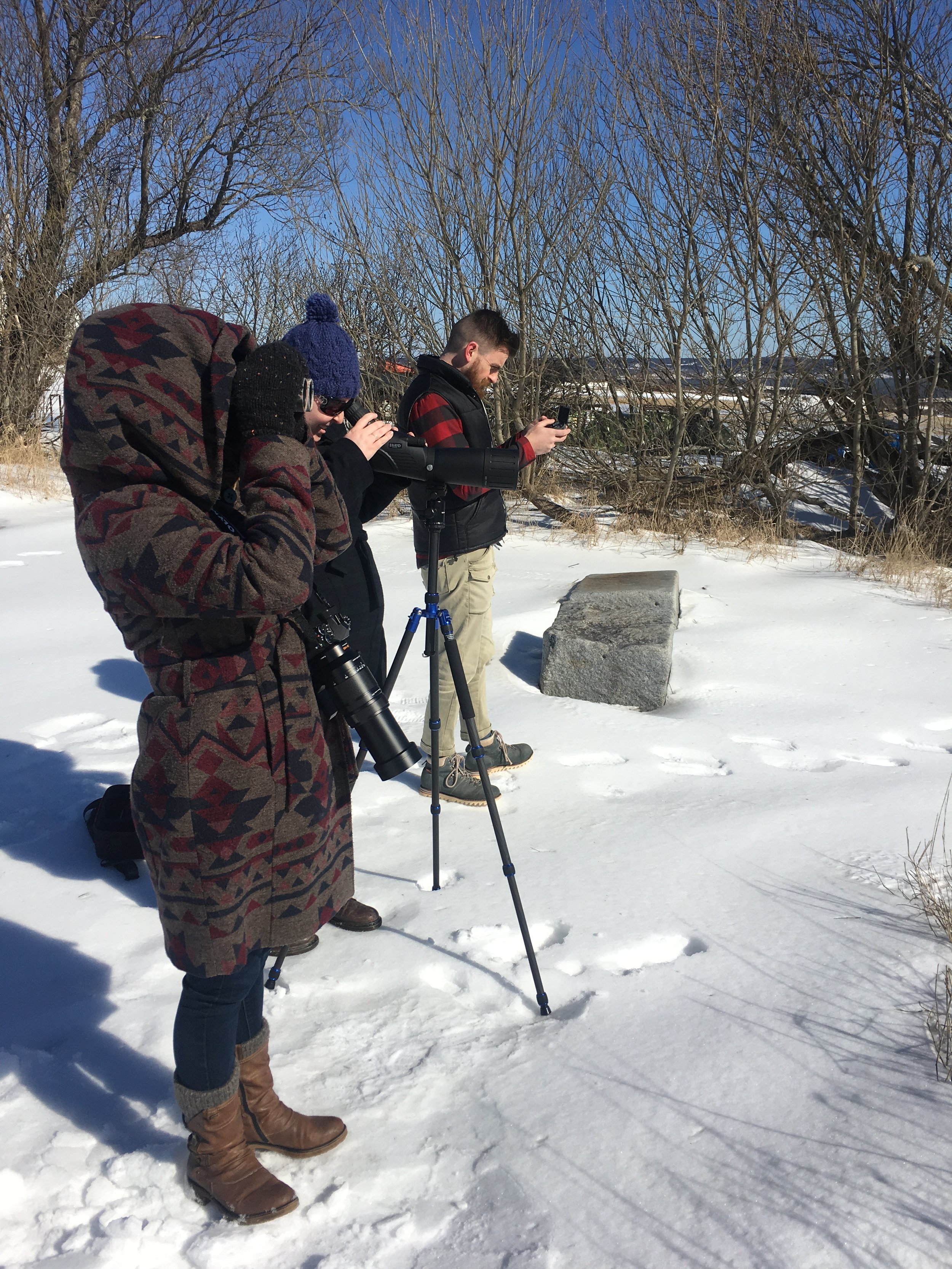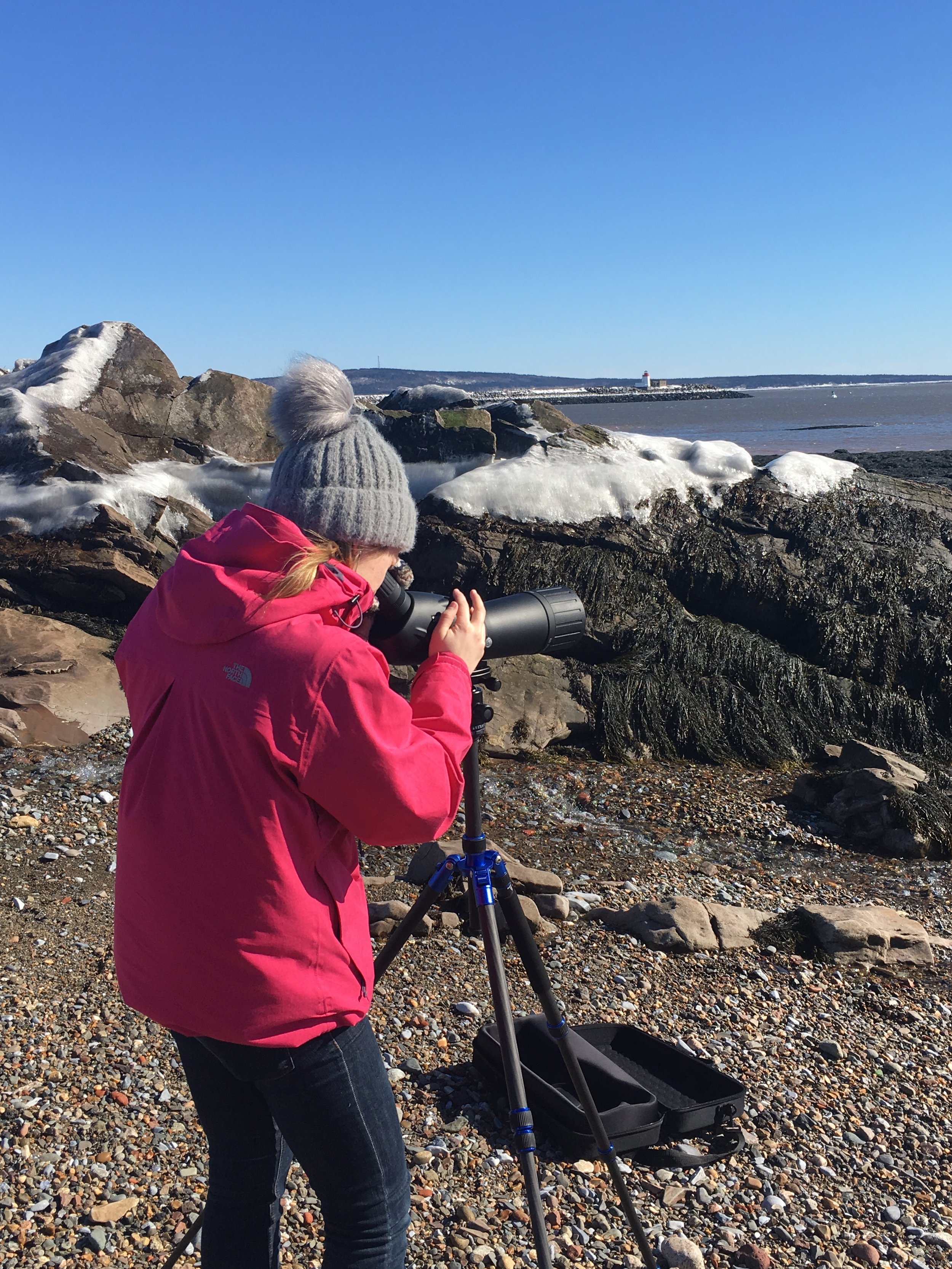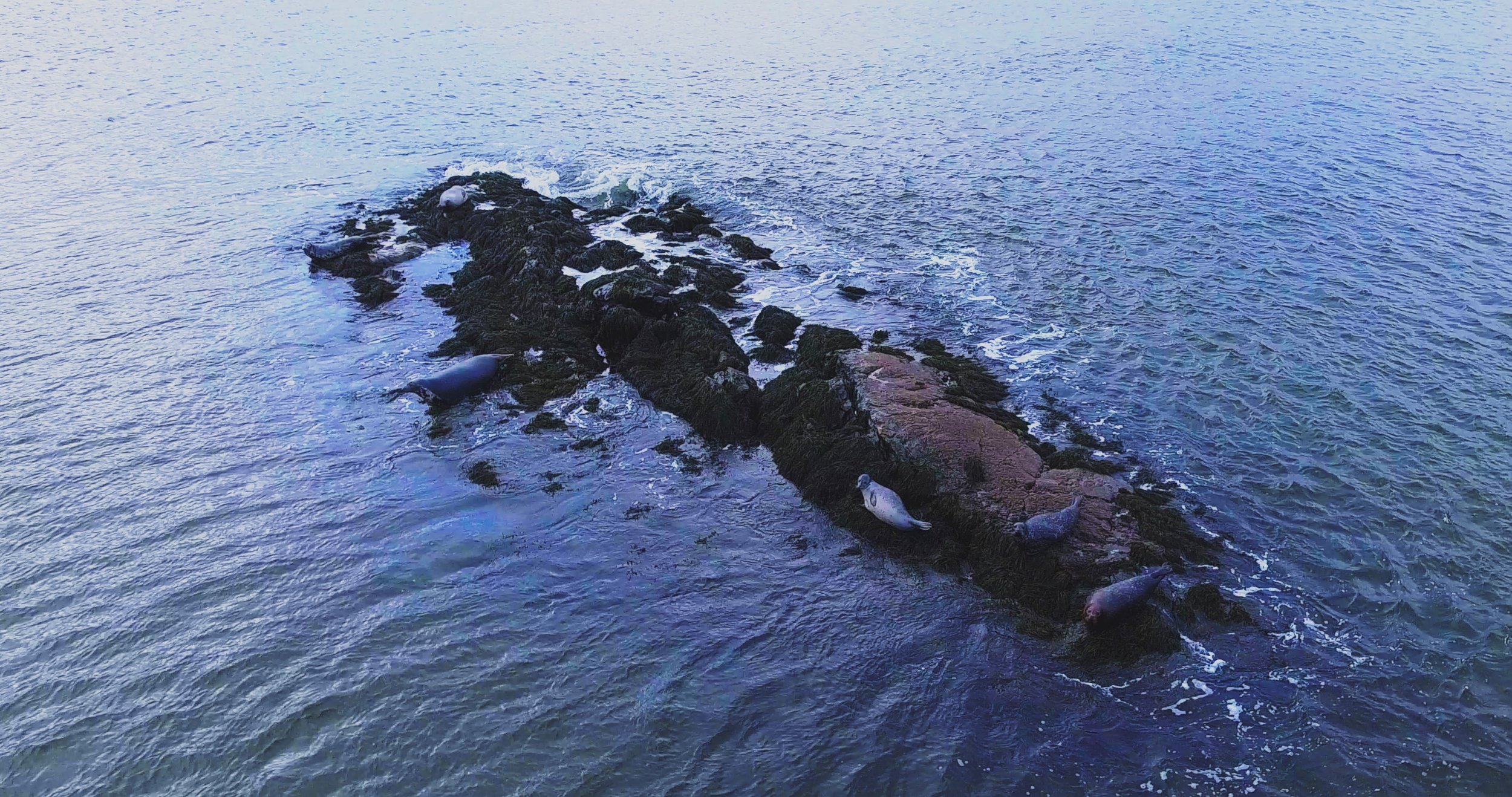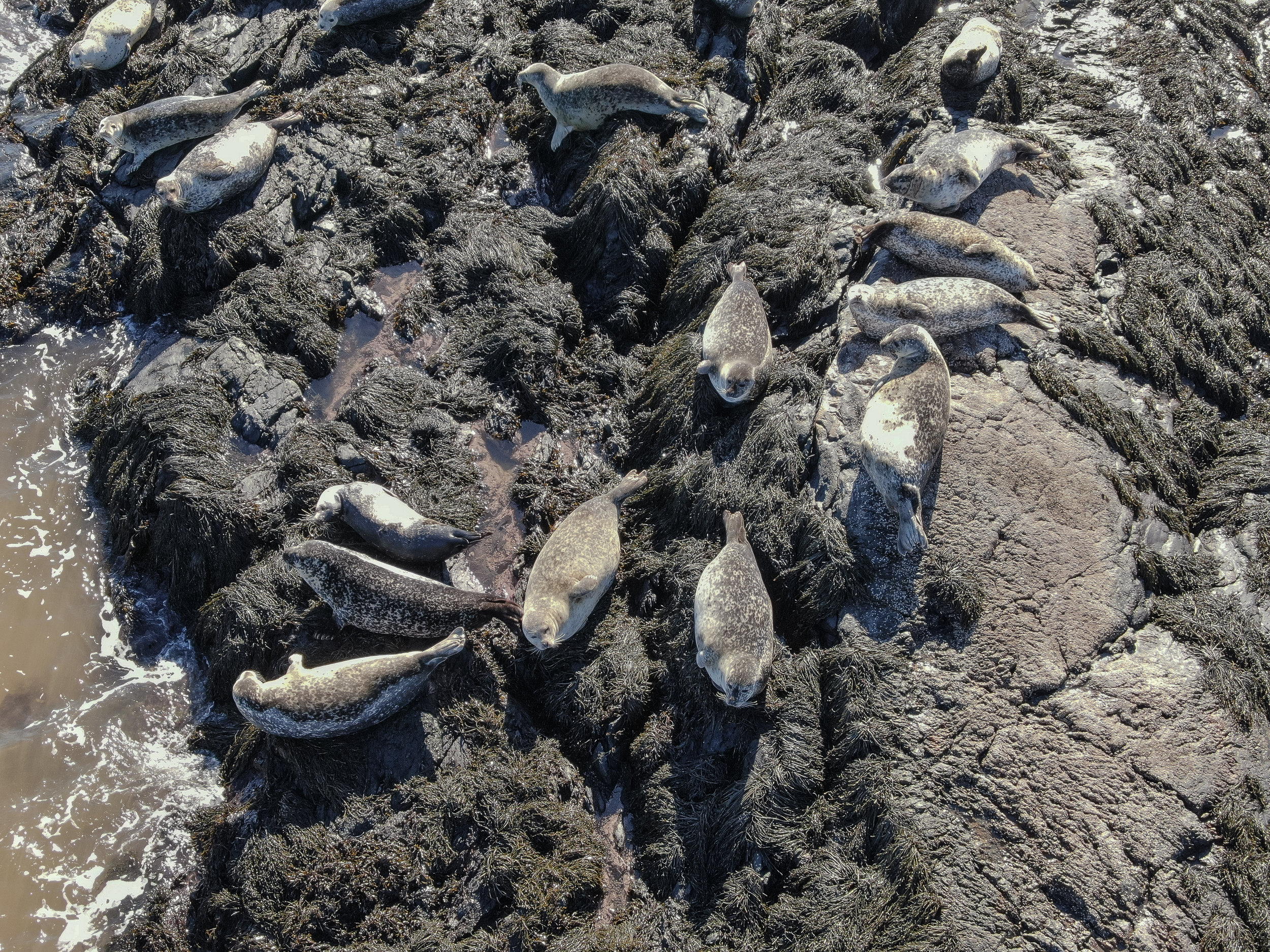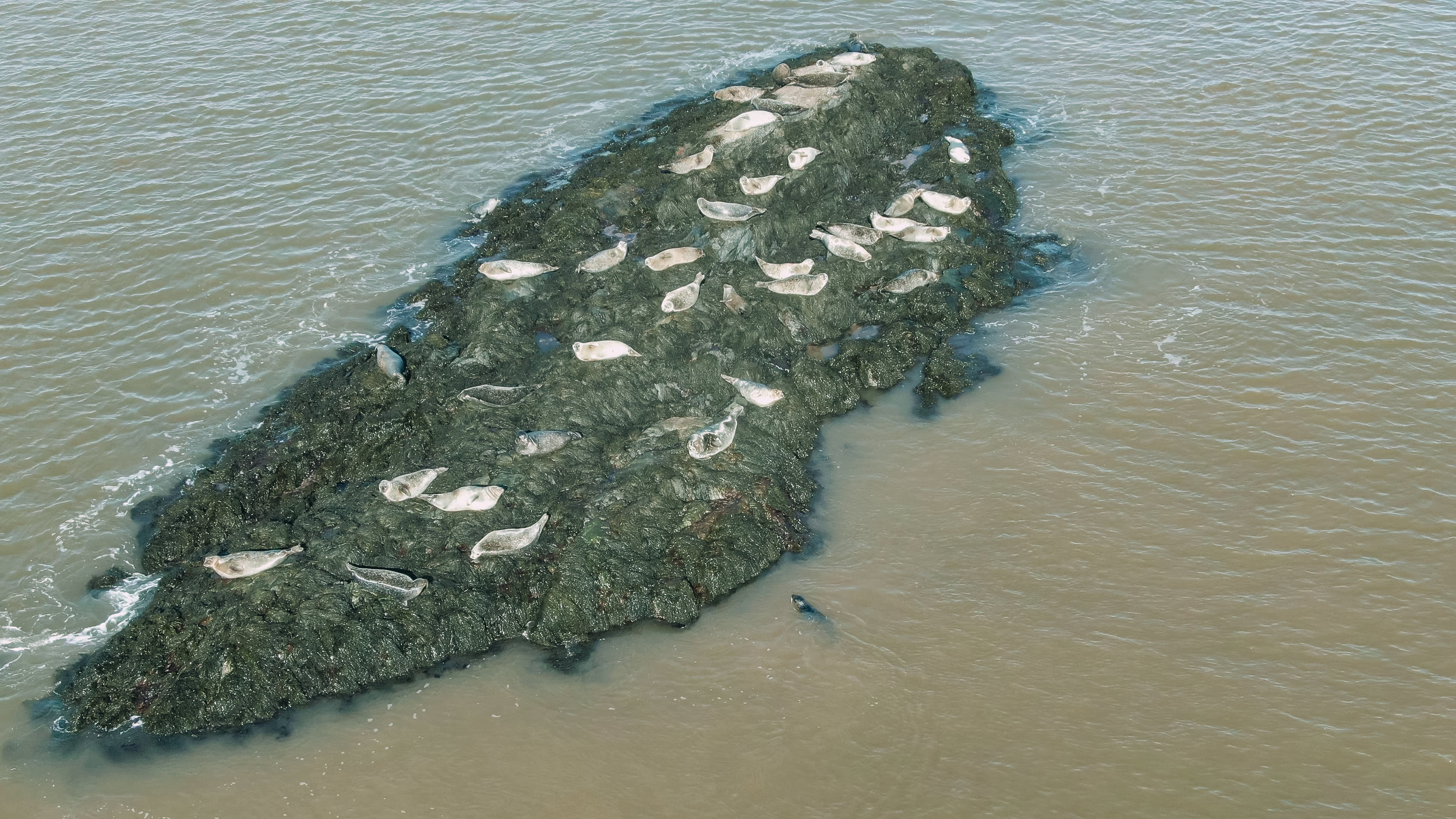Seal of Approval
It’s not uncommon for Saint Johners to see seals during their travels. Whether they are walking on the Harbour Passage or causally boating along the Wəlastəkw [St. John River]. Even the Saint John Sea Dogs and Port Saint John use the seal as their mascots!
But did you know that there hasn’t been much research conducted on seals in the Bay of Fundy, specifically here in our Harbour? Sure, we know general facts like how much they weigh and what they like to eat, but their population size is currently unknown in our region.
To help fill in some of these data gaps, ACAP has stepped out of their comfort zone to monitor Harbour Seals right here in the Saint John Harbour!
Dr. Terhune from UNBSJ is what I like to call a seal expert. In 1984 and 1987, Dr. Terhune and his team monitored harbour seal numbers along the Southern coast of New Brunswick. Aerial surveys (on a fancy plane might I add) were conducted every two weeks for 12 months (weather permitting). Surveys were completed when low tide occurred in the mid-afternoon at different haul out sites* along the coast and the number of seals that were hauled out were recorded.
*haul out site: a location (such as an intertidal ledge, mudbank, beach or ice flow) where a seal will come completely out of the water and lie quietly for a few hours. In areas like the Bay of Fundy, with high tidal influence, haul out sites are exposed on the falling tide. It’s thought that seals will haul out to rest, for thermoregulation and to avoid predators.
Dr. Terhune found that the seal population took a seasonal shift south (towards Maine and Massachusetts) during the winter (Jacobs and Terhune, 2000). Since their population hasn’t been studied in so long, ACAP Saint John decided to replicate the same methods as Dr. Terhune and have been monitoring different seal haul out sites throughout the Saint John Harbour. Instead of using planes and helicopters to complete our surveys, we have been using spotting scopes, binoculars and drones (directly from shore) to count the seals that haul out.
Our study will take place over the next two years, where we will monitor the different haul out sites biweekly and count and record the number of seals that are seen (including both seals hauled out and any seen swimming around). The black triangles on the map below are where the haul out sites that we have been monitoring are located.
We began monitoring seals in November and seals were observed even throughout the winter months despite the cold. It is still too early to make any conclusive results when it’s only been a few months of observations, but collecting data over the next couple of years will contribute to filling up data gaps in our region.
Map of Harbour Seal haul out site locations throughout the Saint John Harbour.
Citizen Science
Have you seen any harbour seals lately? We’re interested in hearing from you! If you see any seals at all during your travels, whether they are swimming along the river or hauled out on some rocks, let us know! You can fill out a Seal Sighting Submission Form and let us know how many seals you saw and roughly where you spotted them. This data collected will help us determine the population of seals here in the Saint John Harbour.
References
Jacobs, S.R., and J.M. Terhune. 2000. Harbor seal (Phoca vitulina) numbers along the New Brunswick coast of the Bay of Fundy in autumn in relation to aquaculture. Northeastern Naturalist 7:289-296.


